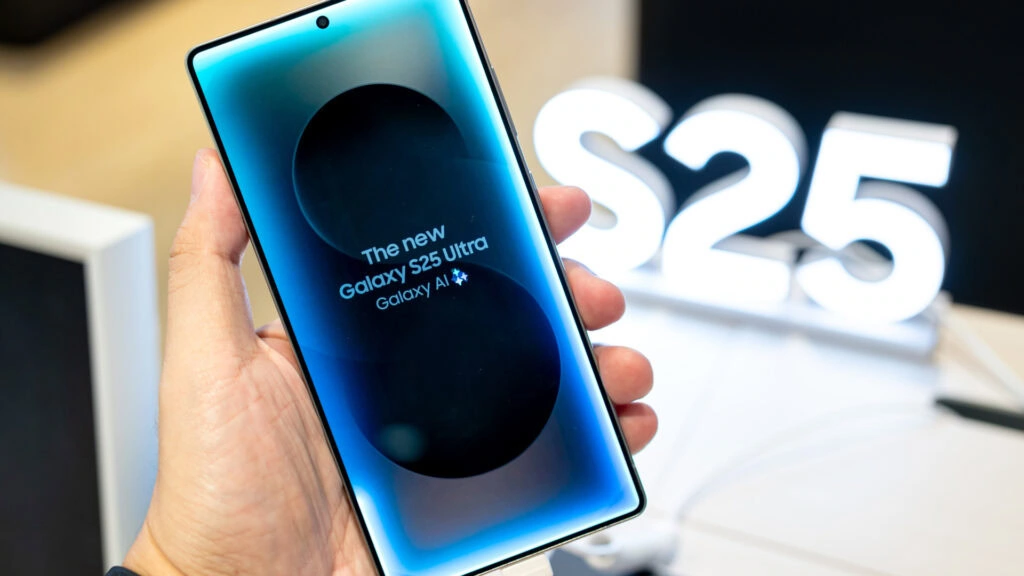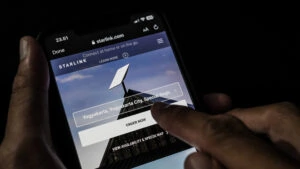The smartphone world is on the brink of profound change. While Apple is focusing on a new design with the iPhone 17 and Samsung is aiming for technological excellence with the Galaxy S26 series, a completely new device concept could overshadow everything that has gone before.
The start-up “io”, under the creative direction of Jony Ive, is planning a device together with OpenAI that will take interaction with artificial intelligence to a new level and could potentially replace the smartphone category. In the midst of an industry with only moderate growth, several innovations are emerging that will permanently change the market in 2025 and 2026.
Samsung Galaxy S25 vs Galaxy S26: What’s really changing?
Samsung unveiled the Galaxy S25 series at the beginning of 2025. The three models – Galaxy S25, S25+ and the flagship Galaxy S25 Ultra – offer strong performance with the new Snapdragon 8 Elite processor and 12 GB of RAM and focus specifically on on-device AI. Camera intelligence, voice assistance and text processing benefit significantly from this integration. The Ultra model in particular is aimed at demanding power users with its S Pen and professional camera equipment. The successor Galaxy S26 is now eagerly awaited and is expected to be released in early 2026. It is expected to have an even brighter display with up to 5,000 nits, narrower display edges, a more powerful camera sensor and the new Exynos 2600 processor for the first time. The refresh rate could also increase to 144 Hz. Rumors also point to a changed model portfolio, in which the Plus model could give way to an Edge model.
iPhone 17 with ProMotion display: Apple’s new smartphone highlight
Apple is also preparing a major update. The iPhone 17, which is scheduled for launch in September 2025, will come with narrower edges, an enlarged display area of 6.3 inches and finally a full 120Hz ProMotion screen for the non-Pro models too. The iPhone 17 Pro will probably be made of aluminum instead of titanium and feature a new hybrid back design made of glass and metal. The camera design – large hump, triangular lens arrangement – will also be revised. The design line remains minimalist, but modernized, and should appeal above all to iPhone purists who are looking for a breath of fresh air with the same operating logic.
Gaming smartphones 2025: Performance for mobile gamers
The trend towards specialized devices is particularly impressive in the gaming segment. The Nubia RedMagic 10S Pro, equipped with a 7050 mAh battery, ICE-X cooling and a powerful AMOLED display, is clearly aimed at mobile gamers who value performance, fast charging times and durability. The increasing demand for niche smartphones shows how differentiated the market has become.
5G smartphones and market forecasts: development until 2026
Despite only marginal growth of 1% in the first quarter of 2025, analysts are forecasting a positive development in the medium to long term, particularly due to the growing spread of 5G, new chip architectures and ubiquitous AI integration. According to an Ericsson study, the number of 5G subscriptions worldwide will rise to around 3.5 billion by 2026. The competition remains intense: Samsung led the way in 2024 with a market share of 18.3%, closely followed by Apple with 17.7% and Xiaomi with 13.5%. This close distribution promotes the speed of innovation throughout the industry.
AI in smartphones: the new standard 2025/2026
AI is the key differentiator of modern smartphones. Applications range from automatic image optimization and predictive user interfaces to real-time translations and text generation. Context-aware assistants that proactively take on tasks and intelligently anticipate user behavior are also particularly noteworthy. AI is becoming not just a function, but the identity of the device itself. At the same time, security requirements are increasing. Multi-level authentication mechanisms such as improved facial recognition, biometric signatures and locally isolated data areas (secure enclave) will be standard in 2025. AI-based threat detection will also become the norm.
Sustainable cell phones and long update guarantees in vogue
Another factor that is becoming increasingly important is sustainability. Longer software support – with seven-year security updates at Apple and Samsung, for example – as well as recycled materials and energy-efficient chips are an integral part of new smartphone concepts. Modularity and reparability are visibly improving, not least due to political regulations and growing public awareness.
Jony Ive’s io-Device: Is the smartphone alternative coming?
However, a real disruptive factor could come from a completely different direction. The start-up io, co-founded by Jony Ive and recently acquired by OpenAI for 6.5 billion dollars, is working on a device that will redefine interaction with AI, according to industry sources. Two versions are currently under development: one with a screen and one without a screen at all, which only works via voice and projection.
And Jony Ive is by no means the only former Apple employee in this partnership: Tang Tan, Scott Cannon, Mark Newson and Evans Hankey are also joining OpenAI. The small device is designed to resemble an iPod Shuffle in size and shape and can be worn comfortably around the neck or stowed in a trouser pocket. It completely dispenses with a screen and instead relies on innovative voice and AI interactions, positioning it as a modern alternative to the smartphone.
Operation is mainly via voice commands, with integrated microphones and cameras not only recording the surroundings, but also enabling context-aware support. Bluetooth headphones or the built-in speakers can be used for phone calls, while video calls can be made using the existing cameras and connection to external displays. An AI assistant is permanently available and ensures natural, intelligent communication.
According to industry insiders, the device will cost between 499 and 799 US dollars, depending on the features and choice of materials. The aim is to create a truly portable AI product that is powerful enough to serve as a replacement for the smartphone, but remains compact enough to be carried around at all times. The permanent, situation-dependent interaction raises the user experience to a new level that goes far beyond the possibilities of current voice assistants.
The focus is therefore on voice control, situational context understanding and ambient computing. The design is more reminiscent of a tech accessory than a classic smartphone. Compact like an iPod Shuffle, worn on the body or in a pocket, equipped with a microphone array, sensors and an optional micro-projector, it is less of a phone and more of an intelligent companion.
Innovative: ambient computing
Ambient computing is new here. It describes a form of technology that integrates unobtrusively and seamlessly into our everyday lives. The aim is to make the environment “smart” and responsive with the help of networked, intelligent systems – often supported by sensors and artificial intelligence. The focus here is on people: the technology acts proactively, recognizes needs in advance and reacts accordingly without the need for conscious input.
A key feature of ambient computing is its seamless integration into the environment. Technical systems are designed in such a way that they are barely perceptible and no longer seem like separate devices. At the same time, various components – such as sensors, actuators and end devices – communicate with each other and form an intelligent network. This creates an environment that adapts flexibly to the respective contexts and usage habits.
Typical examples of ambient computing are intelligent lighting systems that adapt to the presence of people or natural light, voice assistants that understand natural speech and trigger corresponding actions, or smart fridges that analyze food stocks and automatically create shopping lists. In everyday working life, there is the possibility of workplace monitoring and optimized workflows.
The overarching objective of ambient computing is to improve comfort, safety and sustainability – through technology that blends unobtrusively and intelligently into everyday life. The concept is closely linked to developments in the Internet of Things (IoT) and artificial intelligence, which together are paving the way for a connected, adaptable living environment.
AI companion instead of smartphone? The outlook until 2027
The market launch is planned for 2026/27. Industry observers see this as an attempt to establish a new device category that could replace the smartphone as the primary interface to the digital world. The claim: an AI companion that integrates itself intelligently, proactively and unobtrusively into everyday life. The success of this concept will depend on how natural and useful the interaction actually is.
One thing is certain: 2025/26 marks the beginning of a new era in mobile communication. Smartphones will become more powerful, smarter and more secure – and for the first time will face real competition from a device that no longer even wants to be a smartphone.







